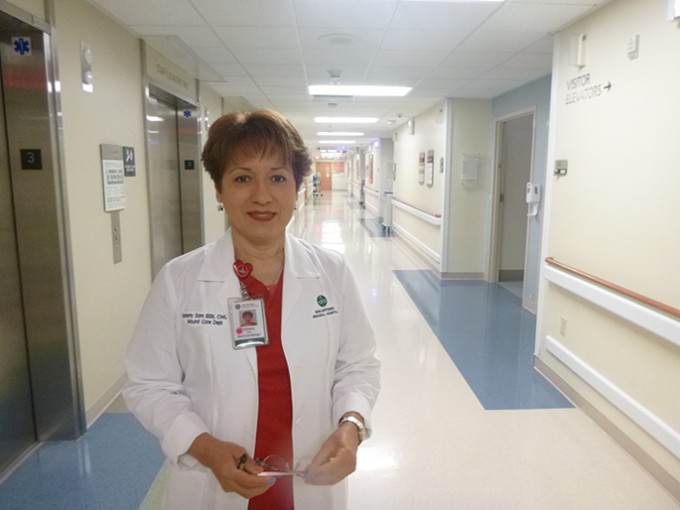My Specialty
Wound Care, Nohemy Sam, San Antonio Regional Hospital
Addressing hard-to-treat or non-healing wounds

Nohemy Sam, RN, BSN, CWOCN
Wound Care Nurse Manager
San Antonio Regional Hospital
Please tell us about the trajectory of your nursing career.
The first nine years of my healthcare career were as a medical assistant and X-ray tech in a family practice clinic. I later obtained my LVN license and worked for six years in a plasmapheresis center. I was initially a staff nurse, but was later promoted to become the center’s trainer. I continued my nursing education and obtained my BSN from Loma Linda University, where I served nine years in a transplant unit that focused on kidney, pancreas and liver transplants.
Wanting to be closer to home, I found a new position at a nearby hospital and worked in the telemetry unit for two years. During this time, I concurrently served as a legal nurse consultant for a private Los Angeles law firm. Later on, I became part of the wound care department at my hospital and obtained certifications in wound, ostomy and continence specialties.
How did you become interested in wound care?
I always felt that I could do more for patients being admitted with different type of wounds and pressure injuries. As a floor nurse, I didn’t have specialized or advanced knowledge about wounds and wound care, so I became very interested in investigating wound therapies, dressings, etc.
When a position opened up after my two years in telemetry, I decided to go for it. Luckily for me, a very experienced wound care nurse took me under her wing and saw me through to my CWOCN [certified wound, ostomy and continence nursing] certification. Also, I’ve always had a director who has been very supportive of my role.
We have over 300 beds in our hospital. I was initially part of a three-person team in the wound care department, but after six months or so, I found myself the only one.
For three years, I was the only CWOCN to evaluate, treat and make recommendations related to wound, ostomy and continence care. Eventually, one of the nurses from the telemetry unit began working towards his certification. Now, we’re the two certified nurses within the department.
What are your responsibilities as a wound care nurse manager?
Some of my duties include evaluating the quality of wound care delivered to patients; monitoring patients’ progress; implementing corrective action to improve patient care related to wounds and ostomies; developing, reviewing and implementing policy/protocol revisions based on current standards; and consulting with physicians and other healthcare professionals regarding the quality of wound and ostomy care.



